Unveiling Rome’s Secrets: 7 Hidden Gems You Must See
Buongiorno and welcome to Stefano’s RomeCabs, Rome’s top-dated Rome Tour Company.
Rome, the eternal city, is steeped in history and splendor and holds countless hidden treasures waiting to be discovered. In this blog post, we will unveil seven of Rome’s hidden gems, allowing you to explore a side of the city that many tourists overlook. From hidden gardens to off-the-beaten-path neighborhoods, get ready to discover these hidden treasures and create unforgettable memories in the Eternal City.
that offer a different perspective on this historic city. These lesser-known sites provide unique experiences and a respite from the bustling crowds, allowing you to immerse yourself in the authentic spirit of Rome.
Join us as we unveil Rome’s secrets and guide you through these seven hidden gems that will leave you awe-inspired and longing to explore on our private Tours of Rome. From ancient ruins to enchanting viewpoints, each of these hidden treasures has its own story to tell and offers a glimpse into the rich tapestry of Rome’s past.
Rome’s 7 Hidden Gems You Must See
1. Appian Way:
Step back in time as you walk along the ancient Appian Way, or Via Appia Antica in Italian, is one of the most famous ancient Roman roads and a remarkable Stretching from Rome to the southeastern city of Brindisi, the Appian Way served as a vital thoroughfare connecting the capital with the regions of Southern Italy and beyond.
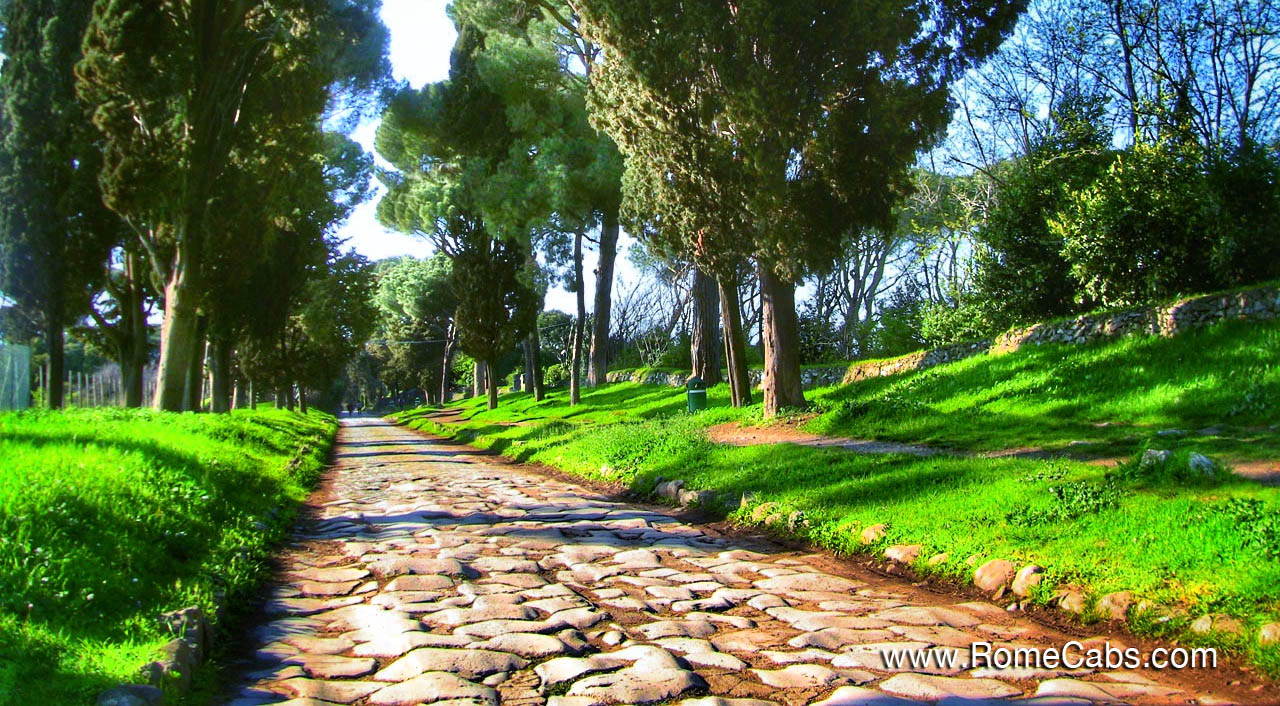
The history of the Appian Way dates back to 312 BCE when it was constructed under the commission of the Roman censor Appius Claudius Caecus. Its purpose was to facilitate trade, transportation of goods, and the movement of Roman legions to protect and expand Roman territories. As the first long-distance road of its kind, the Appian Way quickly became a symbol of Roman engineering and military might.
Constructed with meticulous planning and engineering techniques, the road was built using layers of carefully packed gravel and sand, topped with large stone slabs. This construction method, known as the “opus signinum,” provided stability and durability, allowing the road to withstand heavy traffic and the test of time.
The road is lined with ancient Roman tombs, mausoleums, and funerary monuments, showcasing the Roman practice of burying the dead outside the city walls. These monuments, built with marble and adorned with intricate carvings, reflect the wealth and social status of the deceased.
One of the most iconic structures along the Appian Way is the Tomb of Cecilia Metella. This cylindrical mausoleum, built in the 1st century BCE, stands as a majestic reminder of the Roman aristocracy. Its impressive design features travertine blocks and a frieze depicting garlands and bucrania, symbolizing sacrifice.
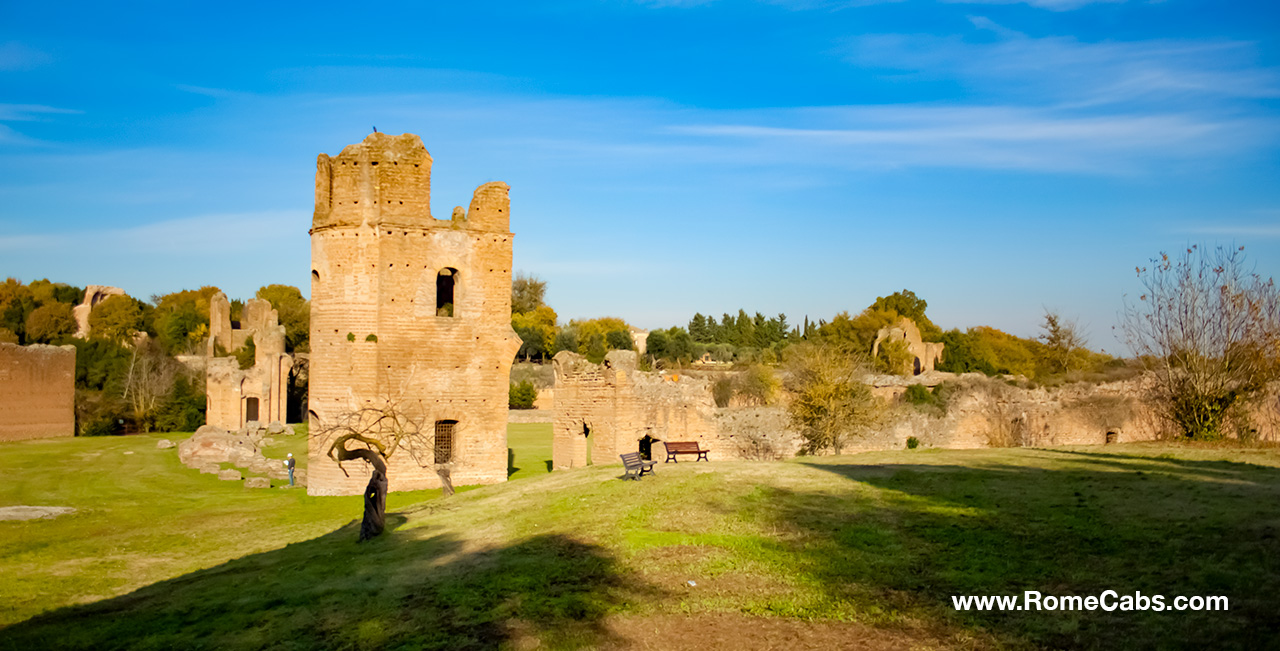
Another notable landmark is the Circus of Maxentius, an ancient Roman chariot racing track. Although partially in ruins, its remains offer insights into the grandeur and spectacle of Roman entertainment. Visitors can still see the remnants of the starting gates, the spina (central barrier), and the seating areas where spectators once cheered for their favorite racers.
Walking along the Appian Way today, visitors can soak in the historic atmosphere and appreciate the significance of this ancient road. Surrounded by picturesque countryside landscapes and dotted with archaeological sites, the Appian Way provides a unique blend of natural beauty and cultural heritage.
Book our ALONG ROME’S EMPIRE ROADS TOUR that also takes you to Via Appia.
3. Aventine Hill
Escape the bustling city streets and find tranquility on top of Aventine Hill and be surprised by what it has to offer.
The Giardino degli Aranci (the Orange Garden): A Serene Escape
Escape the bustling city streets and find tranquility on top of Aventine Hill. The Orange Garden, also known as Parco Savello, is a tranquil oasis that provides a serene escape from the bustling city. As you stroll through this enchanting garden, you will be surrounded by citrus trees that in the spring will reward you with their fragrant flowers.
However, the true highlight awaits you at the garden’s edge, where an awe-inspiring panoramic view of Rome unfolds before your eyes. From this vantage point, you can marvel at the iconic landmarks that grace the city’s skyline, including the dome of St. Peter’s Basilica.
The Secret Keyhole on Aventine Hill
Adjacent to the Orange Garden, a hidden treasure awaits those who dare to peek through the Secret Keyhole. Located within the grounds of the Priory of the Knights of Malta, this unassuming keyhole offers an extraordinary surprise. As you gaze through its small opening, a perfectly framed view of St. Peter’s Basilica emerges, creating a mesmerizing and picture-perfect scene. It is a moment that captures the essence of Rome’s beauty and leaves visitors in awe of the city’s architectural wonders.
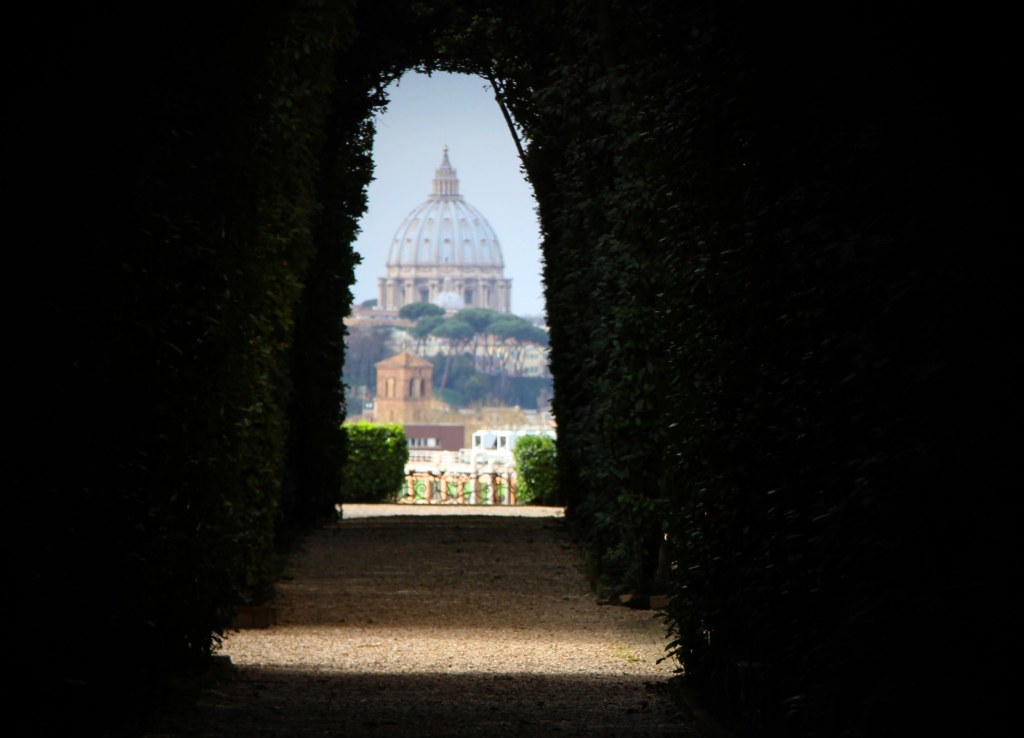
Our guests who book our VIP Airport Transfer with Rome Tour revel in a stop on Aventine Hill where they can discover the hidden gems of the Orange Garden and the Secret Keyhole. These delightful attractions offer stunning and unexpected views that are sure to leave a lasting impression.
3. Arch of Janus
The Arch of Janus is an intriguing and lesser-known ancient monument that carries with it a rich history and unique architectural features. Situated near the Forum Boarium, the arch stands as a testament to the architectural prowess of the ancient Romans.
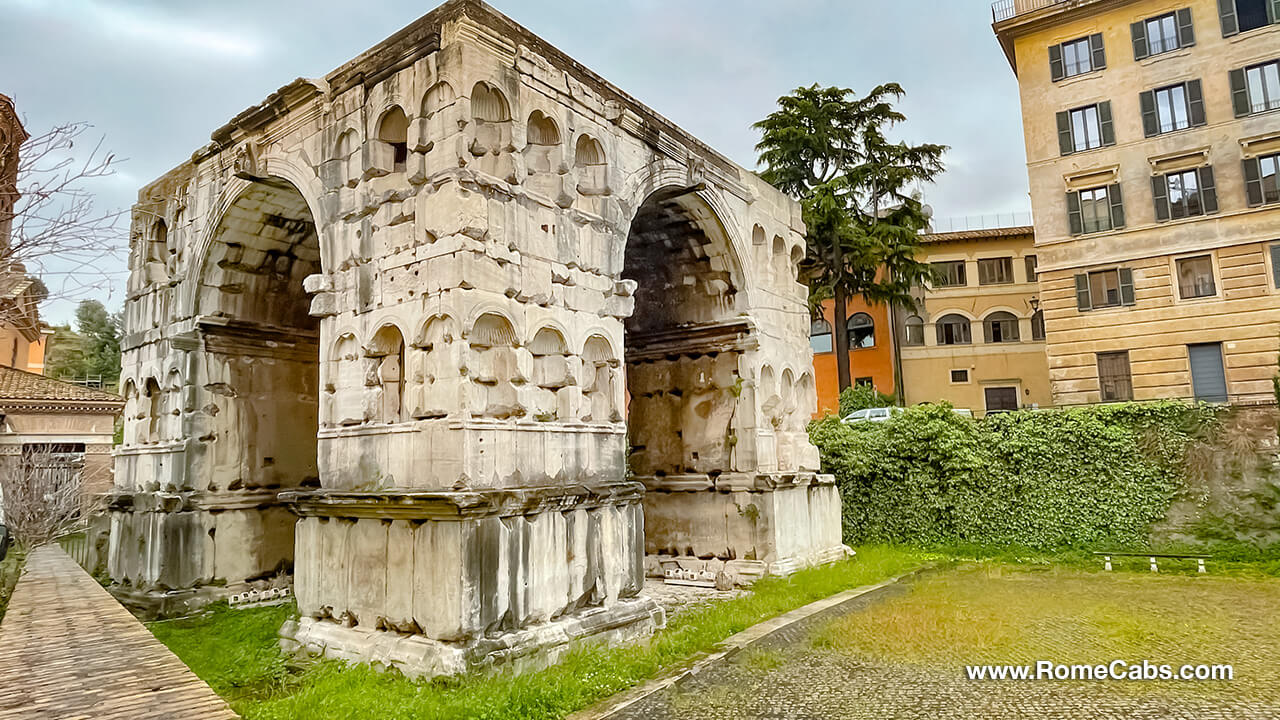
Believed to have been constructed during the late 4th century or early 5th century AD, the Arch of Janus is an exceptional example of the distinct architectural style prevalent during the Late Antique period. It is named after the Roman god Janus, who was traditionally associated with transitions, doorways, and beginnings. The arch’s dedication to Janus reflects its symbolic function as a gateway.
What sets the Arch of Janus apart from other ancient Roman arches is its unusual design. Unlike the typical triumphal arches with a central archway and two side passages, the Arch of Janus features four arches, creating a square structure. This unique quadrifrons design, with each side boasting an archway, makes it a rare architectural marvel in Rome.
The arch is constructed using brick and travertine, a type of limestone commonly used in Roman architecture. Its exterior showcases intricate carvings and decorative elements, displaying the exceptional craftsmanship of the ancient artisans. The arch’s interior is hollow and comprises small chambers that were likely used for various purposes, such as storage or as a meeting place for merchants.
The historical significance of the Arch of Janus lies in its location at the intersection of two important ancient Roman roads, the Via Flaminia and the Via Tecta. This strategic placement allowed the arch to serve as a monumental gateway between different parts of the city and to control access to the Roman Forum.
Over the centuries, the Arch of Janus underwent several modifications and adaptations. It is believed to have been converted into a fortified structure during the medieval period, with the addition of defensive walls and towers. These modifications were likely made to repurpose the arch for defensive purposes during turbulent times.
Today, the Arch of Janus stands as a remarkable testament to the architectural ingenuity of the ancient Romans and provides a glimpse into the rich history of Rome. While it may not be as famous as some of the city’s other ancient landmarks, such as the Colosseum or the Pantheon, it offers visitors a unique opportunity to appreciate the lesser-known architectural gems of Rome.
Seeing the Arch of Janus allows one to immerse themselves in the layers of history and explore the interplay between Roman antiquity and the city’s medieval past. It serves as a reminder of the city’s enduring legacy.
ALSO READ: Rome Safety and Travel Tips: Ensuring a Secure and Enjoyable Visit
4. The Jewish Ghetto
The Jewish Ghetto in Rome is a captivating neighborhood that carries a profound historical and cultural significance. Located along the banks of the Tiber River, this area has a rich history that stretches back more than two thousand years, making it one of the oldest Jewish communities in the world.
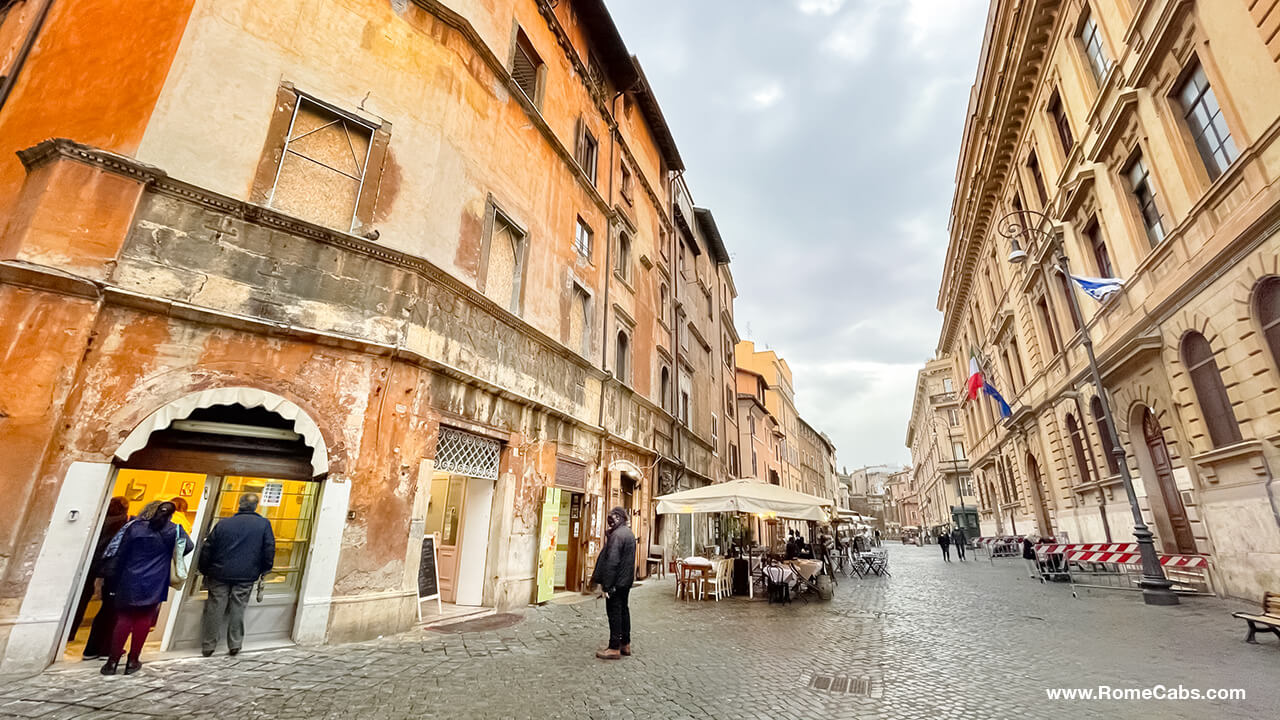
Explore the historic Jewish Ghetto, a vibrant neighborhood with a rich cultural heritage. From its narrow streets and picturesque squares to its traditional Jewish bakeries and Roman trattorias, this lesser-known district offers a glimpse into the city’s diverse tapestry.
The history of the Jewish Ghetto dates back to the 2nd century BC when a Jewish community settled in the Trastevere district of Rome. However, in 1555, Pope Paul IV issued a papal bull that confined the Jewish population to a designated area, thus creating the Jewish Ghetto. The area was a walled quarter with gates that were locked at night, effectively segregating the Jewish community from the rest of the city.
Life within the Jewish Ghetto was challenging for its inhabitants. The living conditions were crowded and impoverished, with narrow streets and cramped houses. Despite these difficulties, the Jewish community managed to maintain its cultural and religious traditions, preserving a unique identity within the confines of the Ghetto.
Cultural and religious life thrives within the Jewish Ghetto, with several kosher restaurants, bakeries, and shops offering traditional Jewish cuisine and goods.
The Jewish Ghetto in Rome is located in close proximity to several remarkable architectural monuments and ruins, adding to the richness of the area’s historical and cultural landscape. Here are some notable sites near the Jewish Quarters. The Portico d’Ottavia is an ancient structure that once housed a fish market and now stands as a testament to the area’s rich history.
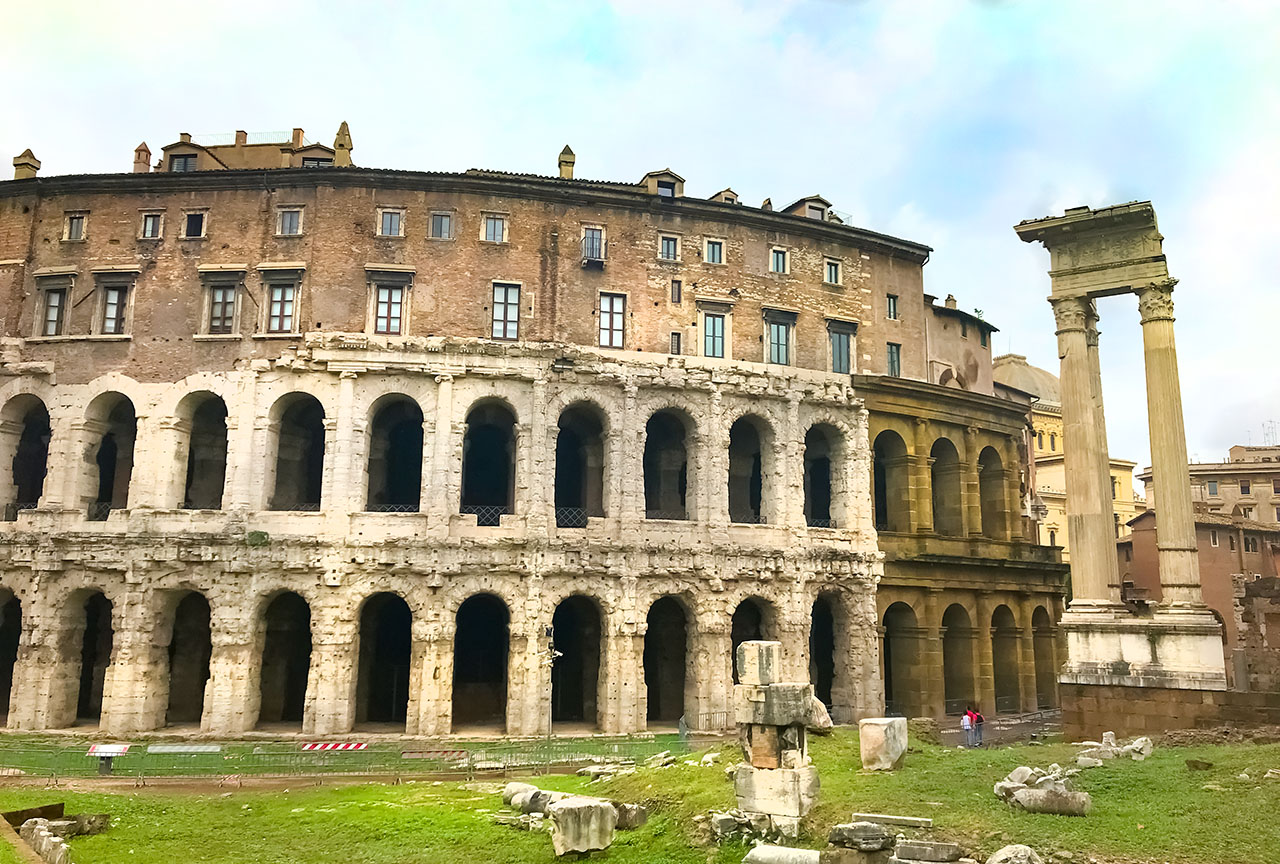
Nearby is also the Theater of Marcellus, a magnificent ancient Roman amphitheater that continues to impress visitors with its grandeur and historical significance. Commissioned by Julius Caesar and completed by Emperor Augustus in 13 BCE, the Theater of Marcellus was dedicated to the memory of Augustus’ nephew and heir, Marcus Claudius Marcellus. This monumental structure was designed to host various forms of entertainment, including theatrical performances, gladiatorial contests, and public spectacles. Lastly, don’t miss the captivating Turtle Fountain, a masterpiece designed by the renowned artist Gian Lorenzo Bernini.
5. Basilica of San Pietro in Vincoli
Unveil a lesser-known gem in the form of the Basilica of San Pietro in Vincoli.
The Basilica of San Pietro in Vincoli (St. Peter in Chains) is a remarkable religious site in Rome known for its historical significance, architectural beauty, and the famous sculpture of Moses by Michelangelo. Situated on the Esquiline Hill, this basilica has attracted pilgrims and art enthusiasts for centuries.
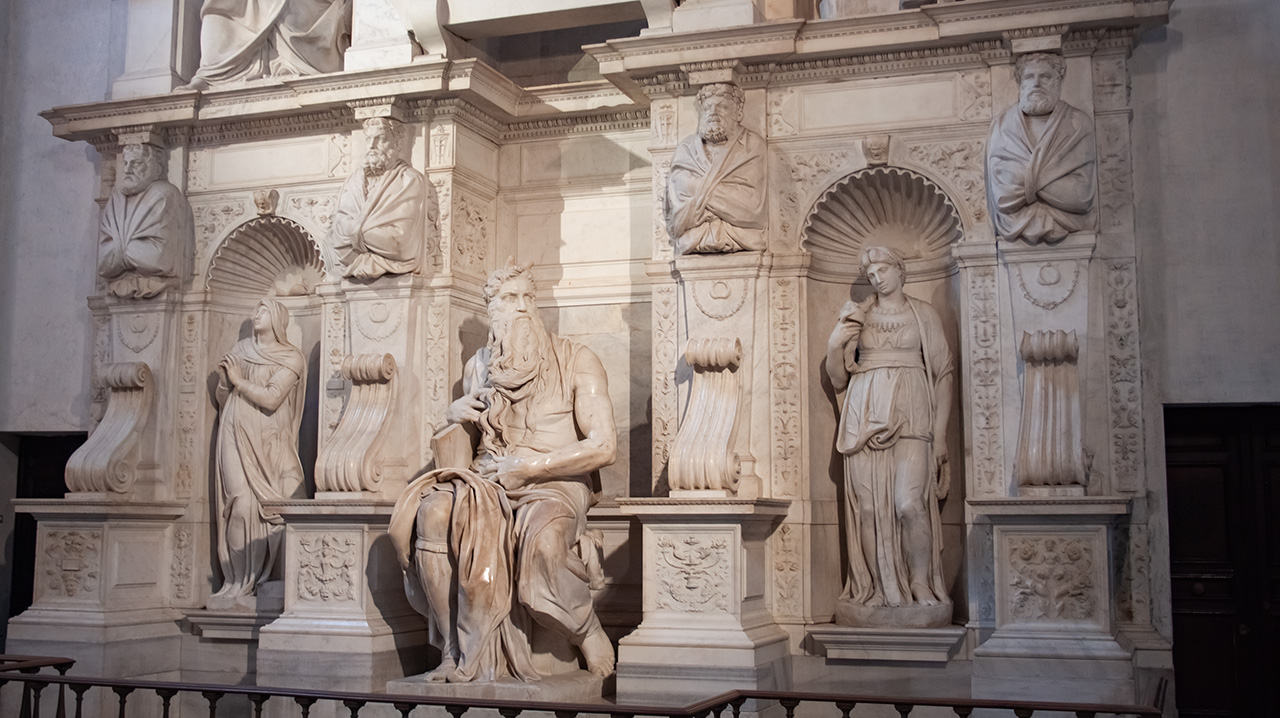
The history of the Basilica of San Pietro in Vincoli dates back to the 5th century when Pope Sixtus III commissioned its construction to house the revered chains that are believed to have bound St. Peter during his imprisonment in Jerusalem. These chains were brought to Rome and were said to miraculously unite with another set of chains held in the Mamertine Prison. The basilica was consecrated in 439 CE and has since been an important pilgrimage site for devotees of St. Peter.
One of the most renowned treasures of the Basilica of San Pietro in Vincoli is Michelangelo’s sculpture of Moses. This masterpiece was originally intended for the tomb of Pope Julius II but was later placed in the basilica. The sculpture depicts Moses seated and holding the tablets of the Ten Commandments, exuding a sense of strength and intensity. The meticulous detailing of the sculpture, from the intricate beard to the powerful expression on Moses’ face, demonstrates Michelangelo’s exceptional skill as a sculptor.
The Basilica of San Pietro in Vincoli continues to be a place of worship, drawing visitors from around the world who come to admire its art and experience its spiritual atmosphere. Beyond its historical and artistic significance, the basilica offers a tranquil space for reflection and reverence.
A visit to the Basilica of San Pietro in Vincoli provides a unique opportunity to appreciate the fusion of faith, history, and art in the heart of Rome. Whether one is drawn to its religious significance, its architectural splendor, or Michelangelo’s awe-inspiring sculpture, this basilica leaves a lasting impression on all who enter its sacred walls.
6. Case Romane nel Celio (Roman Houses on the Celian Hill)
Delve beneath the surface of modern-day Rome and discover the Case Romane nel Celio.
Case Romane nel Celio, also known as the Roman Houses on the Celian Hill, is a fascinating archaeological site in Rome that offers a glimpse into the daily life of ancient Romans. Nestled beneath the Basilica of Saints John and Paul on the Celian Hill, this hidden gem provides a unique opportunity to explore well-preserved Roman houses and admire their remarkable frescoes.
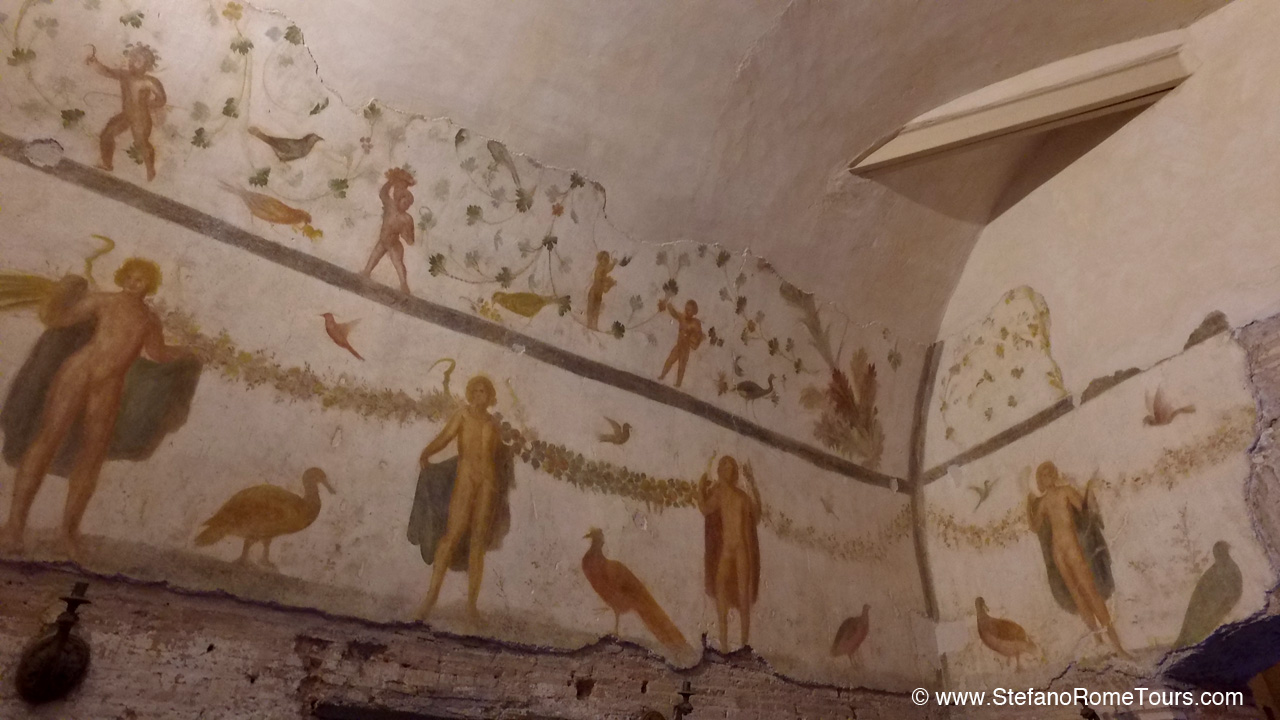
The history of Case Romane nel Celio dates back to the 2nd and 3rd centuries CE when these houses were inhabited by wealthy Roman families. Over time, the structures were abandoned and gradually buried under layers of earth, preserving them remarkably well. It wasn’t until the 19th century that the site was rediscovered during excavations, revealing a trove of historical and artistic treasures.
The architecture of Case Romane nel Celio showcases the refined taste and opulence of Roman domestic life. The houses consist of a series of interconnected rooms, including reception halls, bedrooms, and even a private bath complex. The layout and design of the houses reflect the typical Roman architectural style, featuring atriums with impluviums (basins for collecting rainwater), decorative floors adorned with mosaics, and intricate wall paintings.
The true highlights of Case Romane nel Celio are the extraordinary frescoes that adorn the walls of the houses. These vibrant and remarkably preserved paintings offer a fascinating glimpse into the artistic style and daily life of ancient Romans. The frescoes depict various scenes, including mythological figures, landscapes, architectural motifs, and everyday scenes of Roman society. The use of vibrant colors, intricate details, and skillful technique demonstrates the mastery of Roman fresco painters.
Exploring Case Romane nel Celio is like stepping back in time, as visitors traverse the well-preserved rooms and corridors, immersing themselves in the ambiance of ancient Roman life. The combination of the architectural layout, decorative elements, and breathtaking frescoes creates an immersive experience that allows visitors to envision the daily routines and cultural milieu of the Roman elite.
ALSO READ: 5 Ways to Minimize your need for Public Transportation in Rome
7. Parco degli Acquedotti (Park of the Aqueducts in Rome)
Parco degli Acquedotti, located outside the center of Rome, is a remarkable park that combines natural beauty with ancient Roman engineering. Spanning over 240 acres, this expansive green space is home to some of the most impressive aqueducts from ancient times, offering visitors a fascinating glimpse into the city’s rich history and architectural achievements.
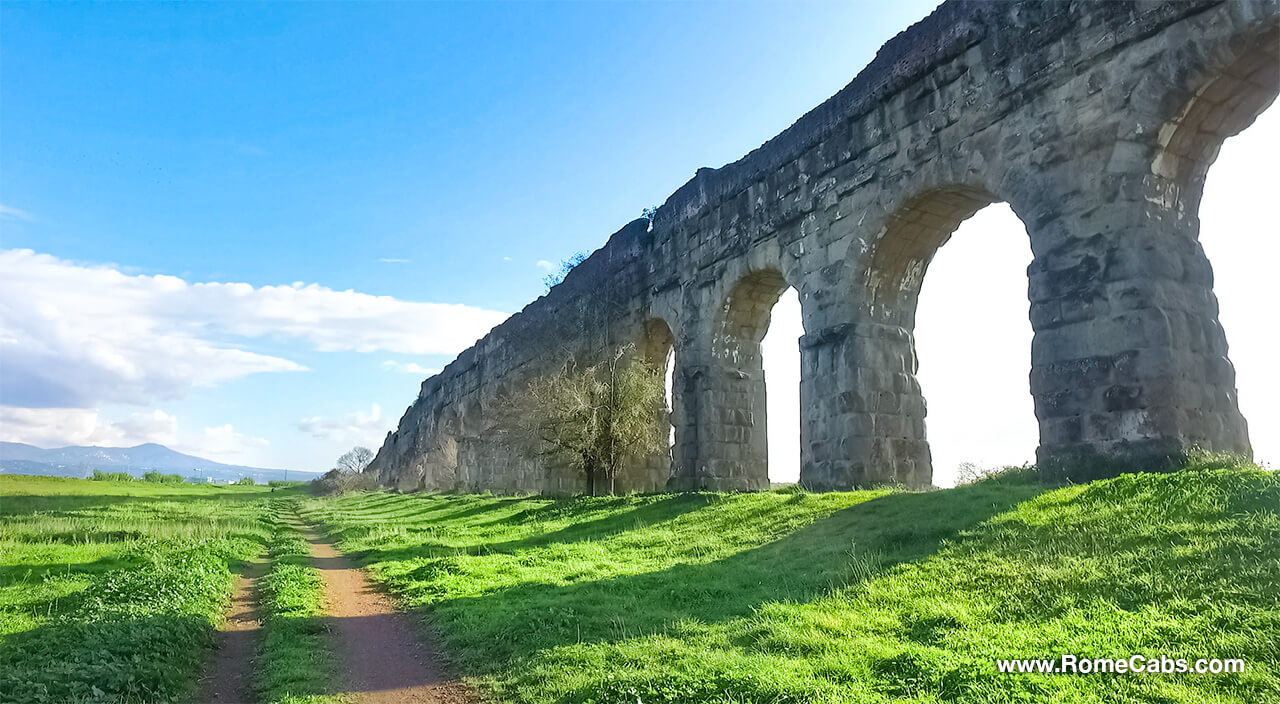
The park takes its name from the aqueducts that crisscross its landscape. These aqueducts were instrumental in supplying Rome with water during the height of the Roman Empire. Built between the 2nd and 1st centuries BC, they served as a testament to the engineering prowess of the ancient Romans. Parco degli Acquedotti showcases two main aqueducts, the Aqua Felix and the Aqua Claudia, which carried water from distant sources to the heart of Rome.
As you explore the park, you will be surrounded by the grandeur of these towering aqueducts, which stand as majestic reminders of Rome’s past. The Aqua Felix, also known as the Felice Aqueduct, is characterized by its rows of arches that stretch across the landscape, creating a sense of awe and admiration for the architectural mastery of the Romans. The Aqua Claudia, on the other hand, boasts a more intricate design with its mix of arches and tunnels, showcasing the ingenuity and innovation of Roman engineering.
Aside from the aqueducts, Parco degli Acquedotti offers a serene and picturesque setting, perfect for leisurely strolls or picnics. The park’s lush greenery, dotted with tall pine trees and rolling hills, provides a peaceful retreat from the bustling city. It is a place where visitors can immerse themselves in nature while marveling at the impressive structures that stand as a testament to Rome’s glorious past. Ultimately there is so much more to see than Rome’s top attractions.
ALSO READ: Best Places to enjoy Rome at Night
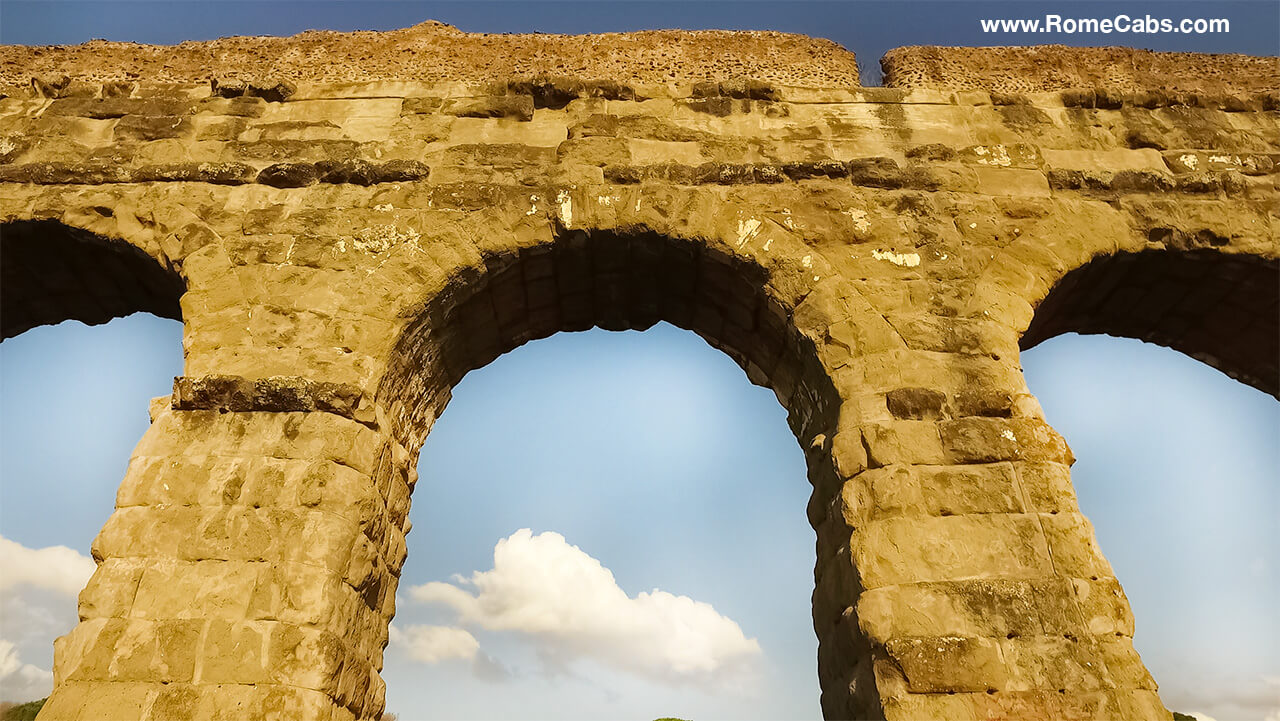
Rome is a city that never ceases to amaze, and beyond its famous landmarks, it holds hidden gems waiting to be explored. From secret viewpoints and ancient roads to underground wonders and hidden neighborhoods, Rome’s secrets are as captivating as its well-known attractions. Venture beyond the Colosseum and the well-trodden paths and uncover hidden gems of Rome
As you plan your trip to the Eternal City, be sure to include these seven hidden gems on your itinerary for a truly unforgettable experience. Contact RomeCabs to arrange your private tour and uncover the secrets of Rome with knowledgeable English-speaking Tour Drivers who will take you off the beaten path to discover many of Rome’s hidden gems you must see.
Get ready to embark on an extraordinary journey filled with wonder and discovery in the heart of Rome.
* Find us online also on:
- RomeCabs FACEBOOK
- RomeCabs PINTEREST
- RomeCabs TWITTER
- RomeCabs TUMBLR
- RomeCabs INSTAGRAM
- RomeCabs FLICKR Photo Gallery
- Recommended on Cruise Critic
.
.



